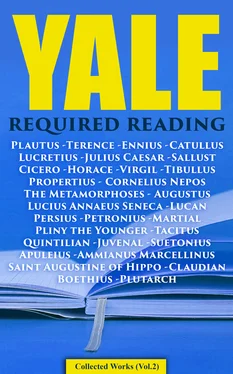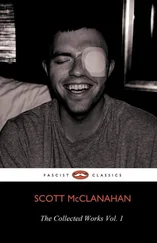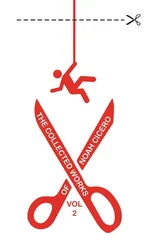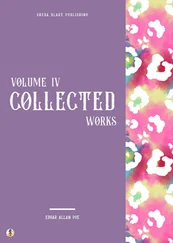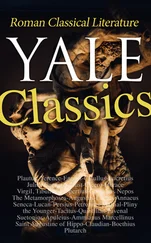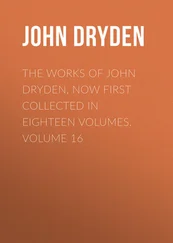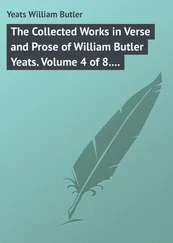Can fall upon our sight, except a square
That images the things? Wherefore it seems
The source of seeing is in images,
Nor without these can anything be viewed.
Now these same films I name are borne about
And tossed and scattered into regions all.
But since we do perceive alone through eyes,
It follows hence that whitherso we turn
Our sight, all things do strike against it there
With form and hue. And just how far from us
Each thing may be away, the image yields
To us the power to see and chance to tell:
For when 'tis sent, at once it shoves ahead
And drives along the air that's in the space
Betwixt it and our eyes. And thus this air
All glides athrough our eyeballs, and, as 'twere,
Brushes athrough our pupils and thuswise
Passes across. Therefore it comes we see
How far from us each thing may be away,
And the more air there be that's driven before,
And too the longer be the brushing breeze
Against our eyes, the farther off removed
Each thing is seen to be: forsooth, this work
With mightily swift order all goes on,
So that upon one instant we may see
What kind the object and how far away.
Nor over-marvellous must this be deemed
In these affairs that, though the films which strike
Upon the eyes cannot be singly seen,
The things themselves may be perceived. For thus
When the wind beats upon us stroke by stroke
And when the sharp cold streams, 'tis not our wont
To feel each private particle of wind
Or of that cold, but rather all at once;
And so we see how blows affect our body,
As if one thing were beating on the same
And giving us the feel of its own body
Outside of us. Again, whene'er we thump
With finger-tip upon a stone, we touch
But the rock's surface and the outer hue,
Nor feel that hue by contact—rather feel
The very hardness deep within the rock.
Now come, and why beyond a looking-glass
An image may be seen, perceive. For seen
It soothly is, removed far within.
'Tis the same sort as objects peered upon
Outside in their true shape, whene'er a door
Yields through itself an open peering-place,
And lets us see so many things outside
Beyond the house. Also that sight is made
By a twofold twin air: for first is seen
The air inside the door-posts; next the doors,
The twain to left and right; and afterwards
A light beyond comes brushing through our eyes,
Then other air, then objects peered upon
Outside in their true shape. And thus, when first
The image of the glass projects itself,
As to our gaze it comes, it shoves ahead
And drives along the air that's in the space
Betwixt it and our eyes, and brings to pass
That we perceive the air ere yet the glass.
But when we've also seen the glass itself,
Forthwith that image which from us is borne
Reaches the glass, and there thrown back again
Comes back unto our eyes, and driving rolls
Ahead of itself another air, that then
'Tis this we see before itself, and thus
It looks so far removed behind the glass.
Wherefore again, again, there's naught for wonder
In those which render from the mirror's plane
A vision back, since each thing comes to pass
By means of the two airs. Now, in the glass
The right part of our members is observed
Upon the left, because, when comes the image
Hitting against the level of the glass,
'Tis not returned unshifted; but forced off
Backwards in line direct and not oblique,—
Exactly as whoso his plaster-mask
Should dash, before 'twere dry, on post or beam,
And it should straightway keep, at clinging there,
Its shape, reversed, facing him who threw,
And so remould the features it gives back:
It comes that now the right eye is the left,
The left the right. An image too may be
From mirror into mirror handed on,
Until of idol-films even five or six
Have thus been gendered. For whatever things
Shall hide back yonder in the house, the same,
However far removed in twisting ways,
May still be all brought forth through bending paths
And by these several mirrors seen to be
Within the house, since nature so compels
All things to be borne backward and spring off
At equal angles from all other things.
To such degree the image gleams across
From mirror unto mirror; where 'twas left
It comes to be the right, and then again
Returns and changes round unto the left.
Again, those little sides of mirrors curved
Proportionate to the bulge of our own flank
Send back to us their idols with the right
Upon the right; and this is so because
Either the image is passed on along
From mirror unto mirror, and thereafter,
When twice dashed off, flies back unto ourselves;
Or else the image wheels itself around,
When once unto the mirror it has come,
Since the curved surface teaches it to turn
To usward. Further, thou might'st well believe
That these film-idols step along with us
And set their feet in unison with ours
And imitate our carriage, since from that
Part of a mirror whence thou hast withdrawn
Straightway no images can be returned.
Further, our eye-balls tend to flee the bright
And shun to gaze thereon; the sun even blinds,
If thou goest on to strain them unto him,
Because his strength is mighty, and the films
Heavily downward from on high are borne
Through the pure ether and the viewless winds,
And strike the eyes, disordering their joints.
So piecing lustre often burns the eyes,
Because it holdeth many seeds of fire
Which, working into eyes, engender pain.
Again, whatever jaundiced people view
Becomes wan-yellow, since from out their bodies
Flow many seeds wan-yellow forth to meet
The films of things, and many too are mixed
Within their eye, which by contagion paint
All things with sallowness. Again, we view
From dark recesses things that stand in light,
Because, when first has entered and possessed
The open eyes this nearer darkling air,
Swiftly the shining air and luminous
Followeth in, which purges then the eyes
And scatters asunder of that other air
The sable shadows, for in large degrees
This air is nimbler, nicer, and more strong.
And soon as ever 'thas filled and oped with light
The pathways of the eyeballs, which before
Black air had blocked, there follow straightaway
Those films of things out-standing in the light,
Provoking vision—what we cannot do
From out the light with objects in the dark,
Because that denser darkling air behind
Followeth in, and fills each aperture
And thus blockades the pathways of the eyes
That there no images of any things
Can be thrown in and agitate the eyes.
And when from far away we do behold
The squared towers of a city, oft
Rounded they seem,—on this account because
Each distant angle is perceived obtuse,
Or rather it is not perceived at all;
And perishes its blow nor to our gaze
Arrives its stroke, since through such length of air
Are borne along the idols that the air
Makes blunt the idol of the angle's point
By numerous collidings. When thuswise
The angles of the tower each and all
Have quite escaped the sense, the stones appear
As rubbed and rounded on a turner's wheel—
Yet not like objects near and truly round,
But with a semblance to them, shadowily.
Likewise, our shadow in the sun appears
Читать дальше
